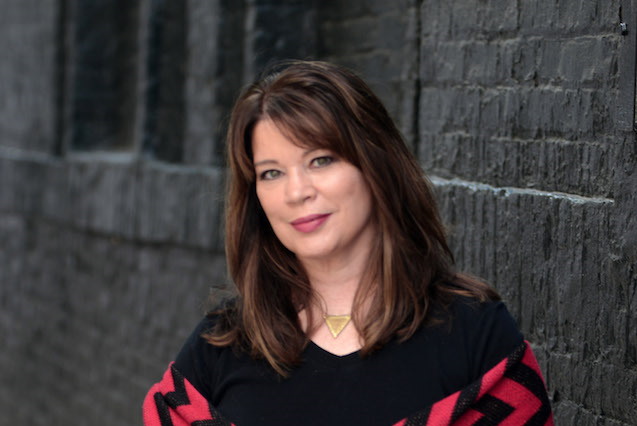The New Art: Balancing Human and Synth in Music Creation
- Written by Angela Predhomme

It’s a great time to be alive for indie music makers! There are many of us, maybe including you, who are creating good music out there, armed with nothing but our own ingenuity and the few dollars in our shallow pockets. But what’s the best way to make music, real or programmed? I like to do a combination of these two because it’s cost effective and gives me more creative control as a producer.
Use Your Strengths as the Anchor
If you’re a good guitar player, go with it. If you’re a good beat-maker or a wizard with patches or cool synths, go with that as the anchor to your music. For me, I’m a classically trained singer and piano player, so that’s where I stay the most “real” in my recordings.
Keyboard Tracks
For keys, I import midi from my full-size Yamaha digital piano. I like playing a real-feeling piano with weighted keys and a pedal, because, as all piano players know, you just have to. If you’re used to playing a real piano, you can’t just play some little bouncy-key keyboard. Unless, that is, you’re Stevie Wonder, and then you can get magic out of anything with keys.
The coolest thing about using midi for piano parts is that I can go in and alter the notes if I need to. Let’s say I was a little early or late on some notes, or I want to bring down the volume of a note that sticks out. I just zoom in and make those little tweaks in my DAW. After working like this, I would hate to record straight audio and give up this tasty little cheat. Does tweaking my naturally-played midi make me less of a musician? That depends on who’s answering the question. But is this an ego contest? Or is it trying to get the best product in a reasonable amount of time, and accepting my own limitations?
Vocals
On to the vocals. Yes, I’ve worked hard at my singing, taking lessons, pushing myself, and training my ear. Am I perfect? No way. A caveat of a trained ear is that you hear, in fine detail, how much you’re off pitch, not only as you listen back, but even as it’s coming out of your mouth. I’ve developed a technique with vocals that works for my singer-songwriter style: My finished vocal tracks are created with a combination of careful editing and a delicate touch of pitch correction.
Depending on the song, for some vocal tracks, I just edit together a decent comp from several takes and re-sung sections, and then forego any pitch correction. This is how I did my recent single, “Changeless Sky.” Here, the bending and sliding of the notes in this soulful style is forgiving enough that I didn’t mess with it.
However, most other vocal tracks of mine were tweaked in parts with Melodyne. I never, ever just click an auto-tune button. I go in and carefully listen, selecting words or syllables in the vocal that stick out to me. Then, I adjust sketchy notes anywhere from 10% to 70%, not 100%. This preserves the humanness.
This mix of natural and pitch-adjusted in the vocal track is what I did with my recent upbeat acoustic song, “So Good to Be Free.” The goal is always that my vocals are reasonably on pitch, and don’t offend my ear.
Drums and Percussion
One of my favorite things is to walk the line between real and programmed with percussion. On my last full album, Love, many of the tracks were recorded with a real drummer playing an electronic kit. The kit sent midi straight into my DAW, connected by a standard USB. The drum tracks on my songs “Hey Mr. Sunshine,” “Top of the Mountain,” Time for a Change” and more were all recorded this way. I was lucky enough to know a good drummer (my brother Jim) who owns an e-kit. The beauty of this method is that you, as the producer, have the midi. You can assign any virtual kit you want to it, move hits to fix a timing fluke, or modify it to experiment with variations.
Also, I didn’t dare quantize these naturally-played midi drum tracks. That’d defeat the purpose of using a real drummer. I moved a couple little hits where they sounded off the click to me, and I used the Sunset producer kit in Logic, which separates each drum or cymbal on its own track for mixing.
Guitar and Bass
I keep guitars real for the most part. For bass, I’ve used both real players and programmed. Real bass players are my preference, but sometimes the budget is tight. For example, in my simple ukulele track “Alive and Free,” the uke is real, but I programmed the bass from a keyboard. In an opposite example, on my song “Always OK,” the guitar is programmed (Native Instruments’ Strummed Acoustic) and the bass is a real player. “Always OK” is a reggae-pop song, so I used a real bass player to stay true to the reggae genre, which puts importance on the bass line. The result is that these tracks blend real and programmed, and didn’t break the bank.
At the end of the day, who says you can’t have your cake and eat it too? Of course you can -- you’re an artist. You can do whatever you want, and craft your own masterpieces with your own unique mix of real and programmed music.
Bio: Singer-songwriter Angela Predhomme’s music has been heard by millions through television, film, radio and streaming. Her soulful songs have been featured in the popular Hallmark movie “Christmas on Honeysuckle Lane,” Lifetime’s hit show “Dance Moms,” commercials for ING Bank and Fiat, and more.
YouTube: http://www.youtube.com/angelapredhomme
Spotify: https://spoti.fi/2OIcj1T
Apple Music: https://apple.co/2PMpZwT
Pandora: https://pdora.co/2OHGJkO
Facebook: https://www.facebook.com/angelapredhomme
Instagram: https://www.instagram.com/apredhomme/
Twitter: http://www.Twitter.com/angelapredhomme





